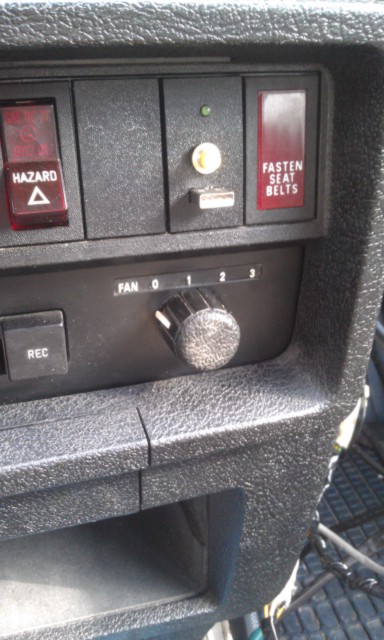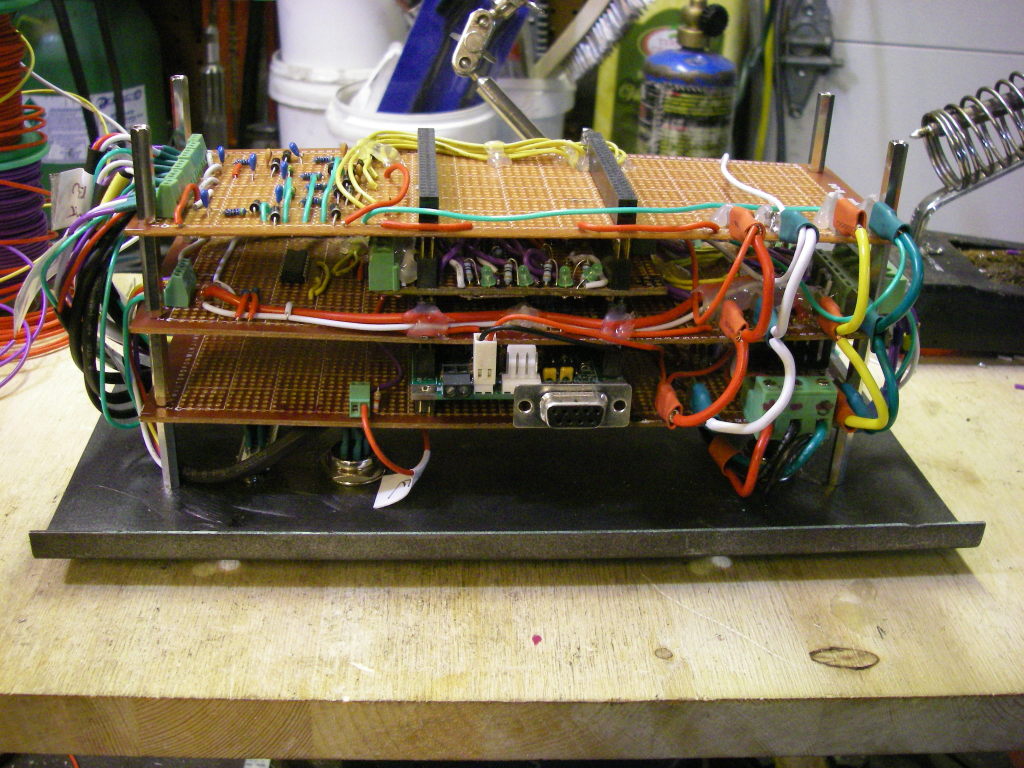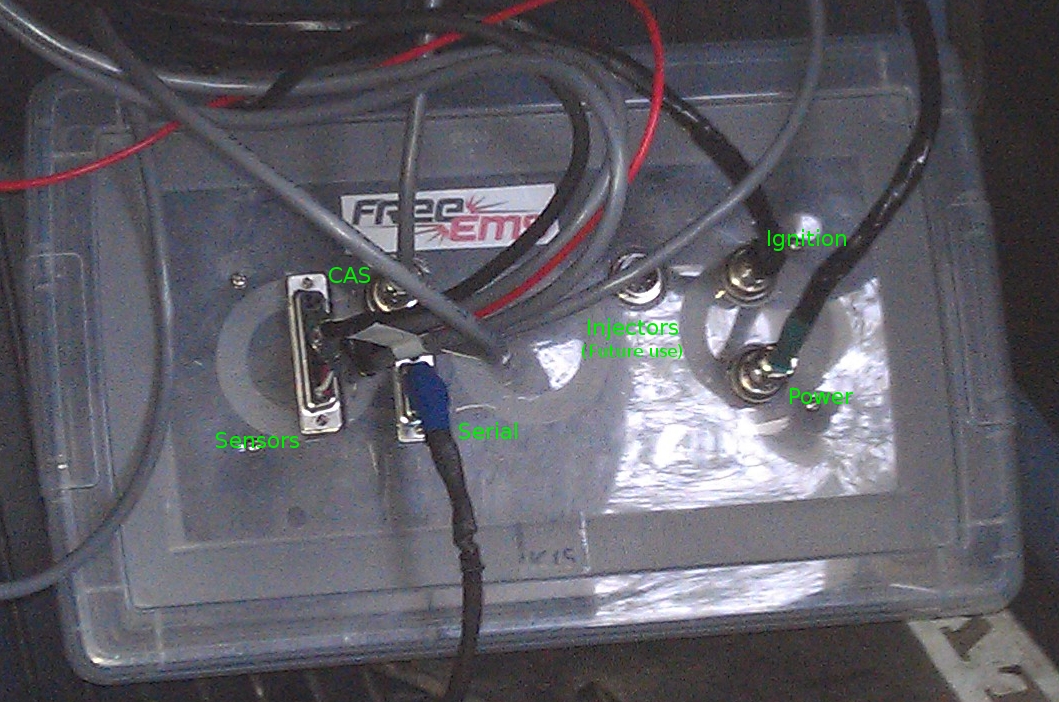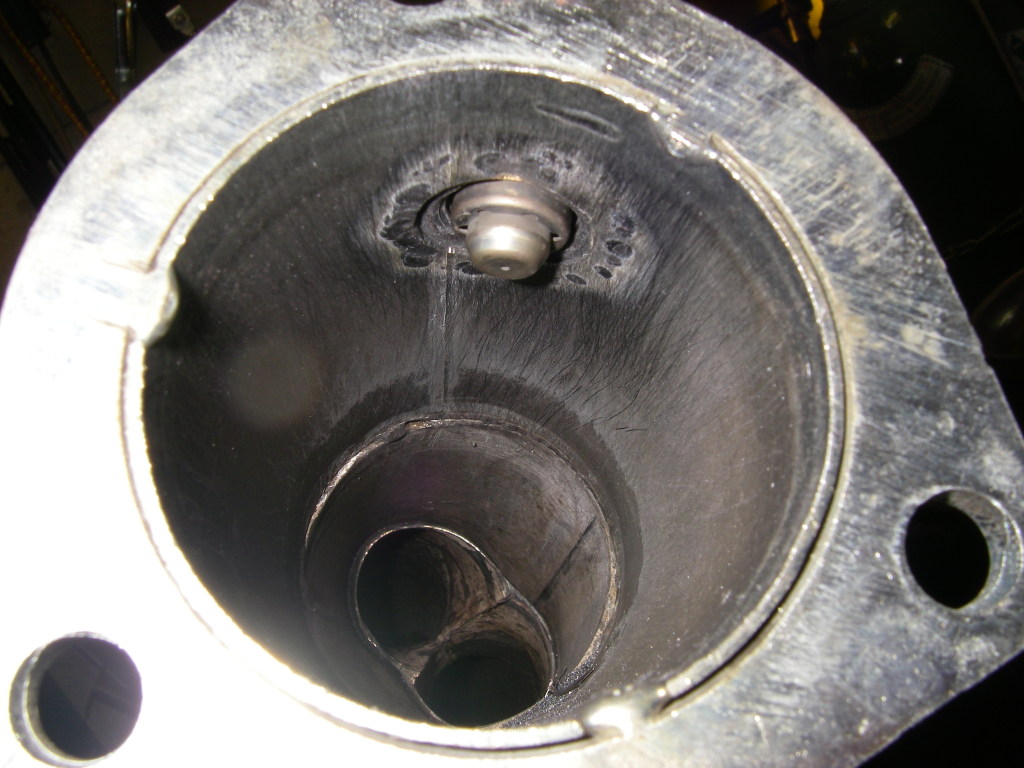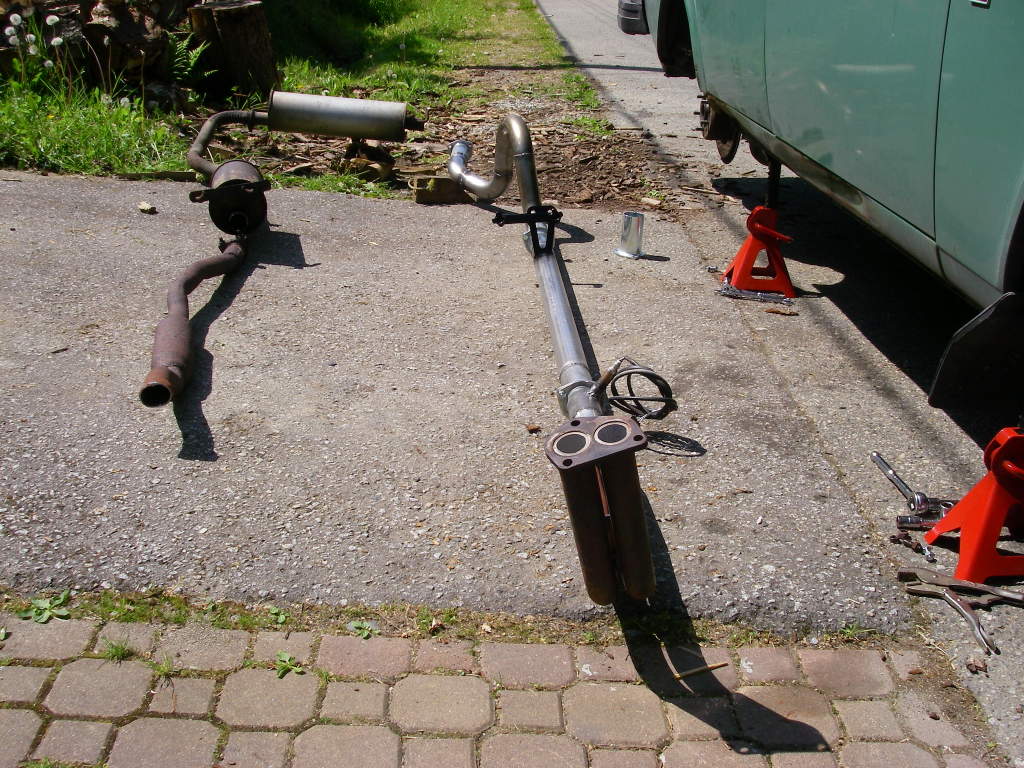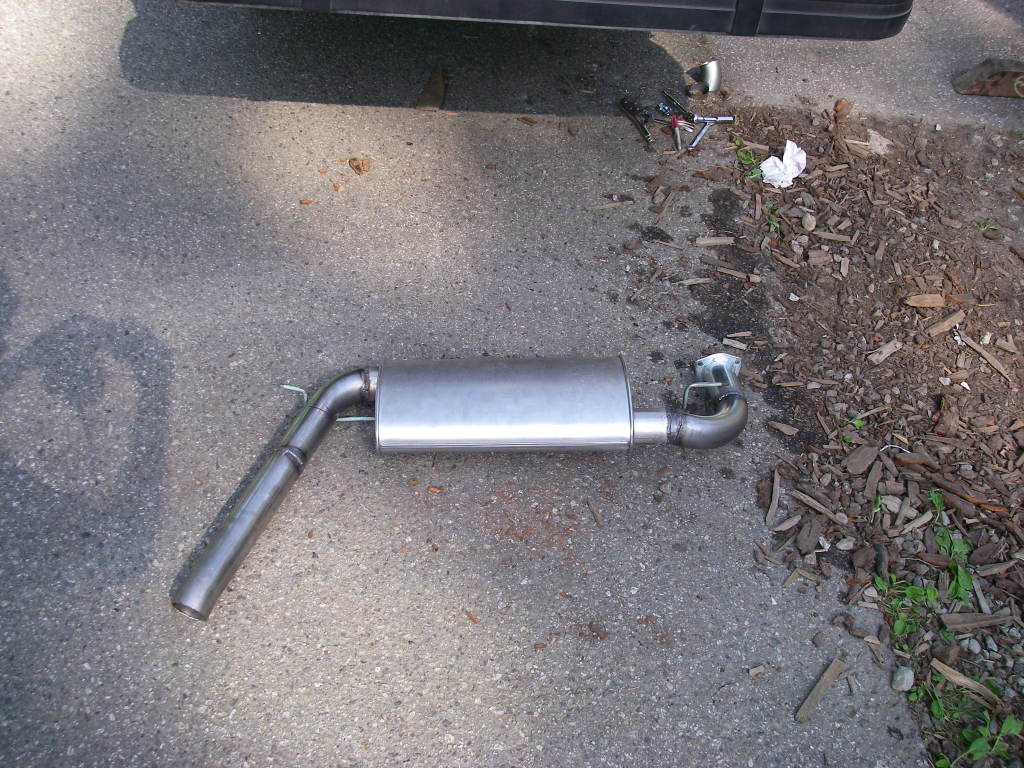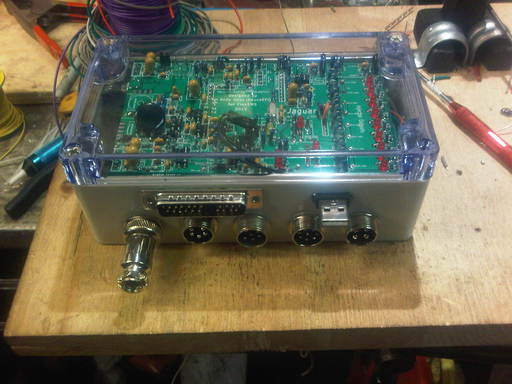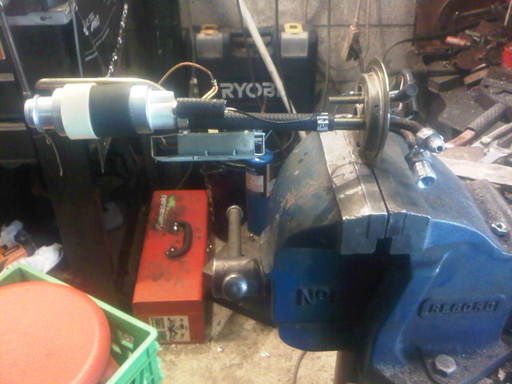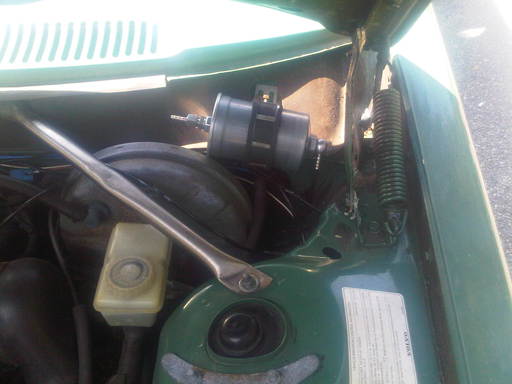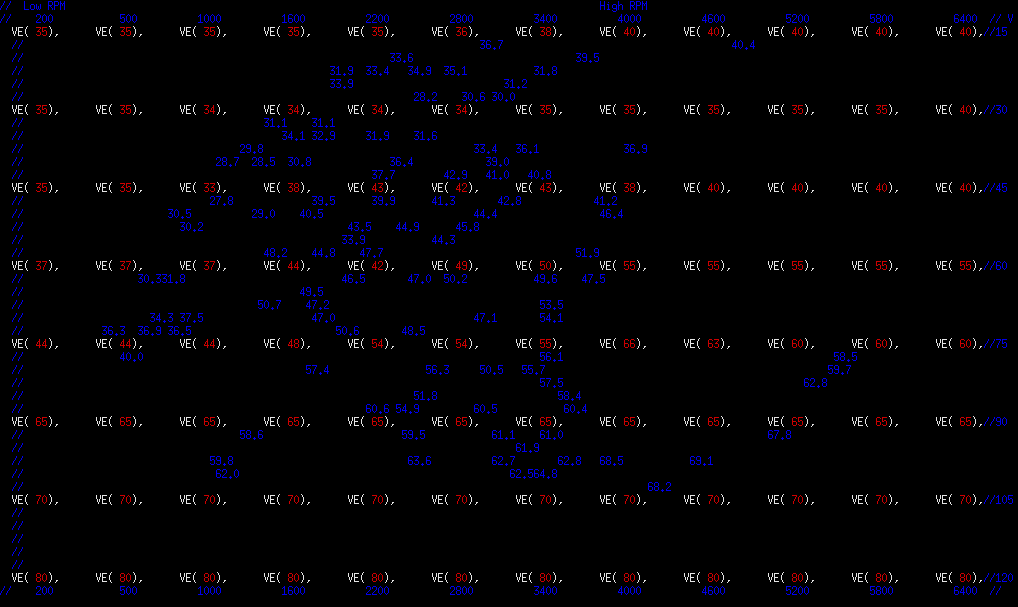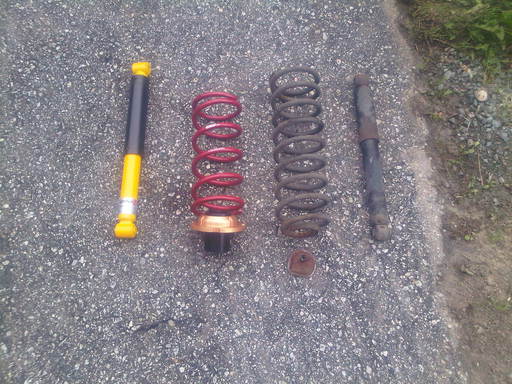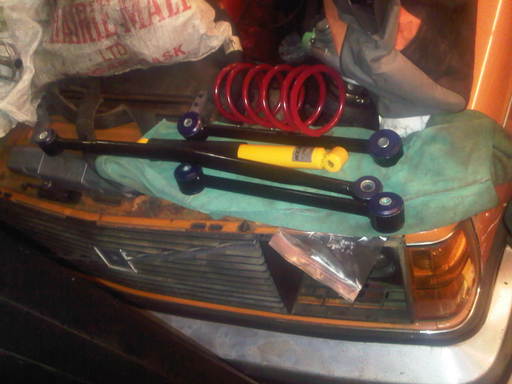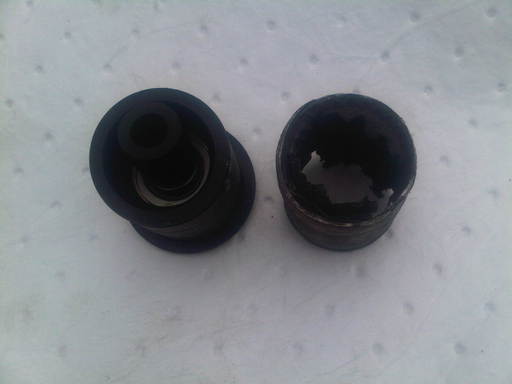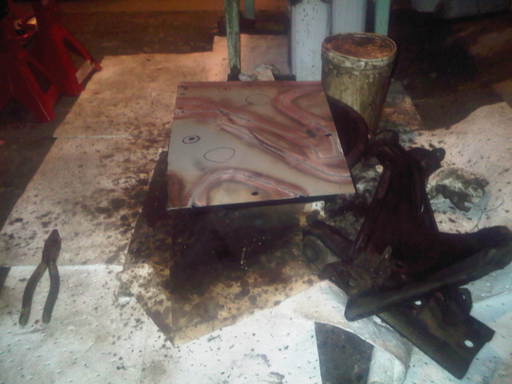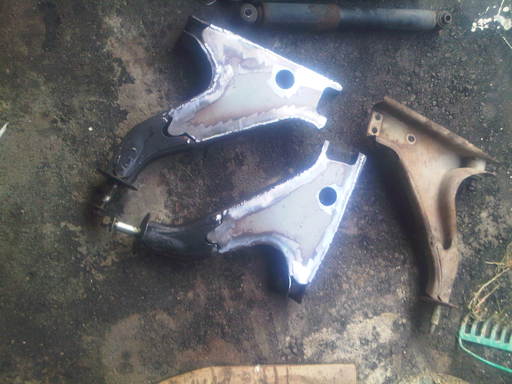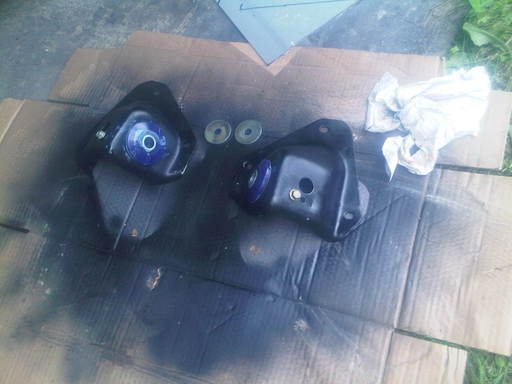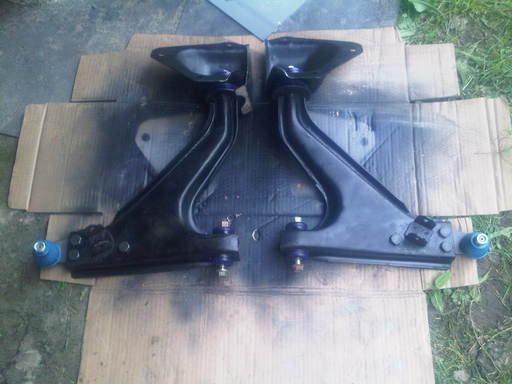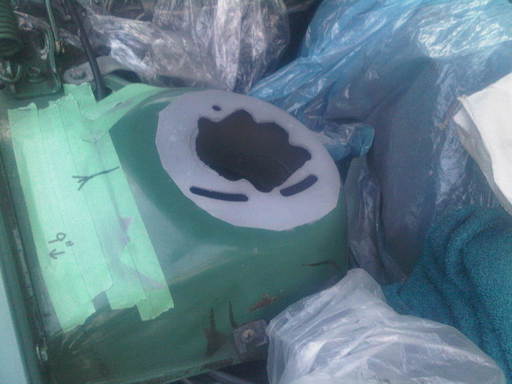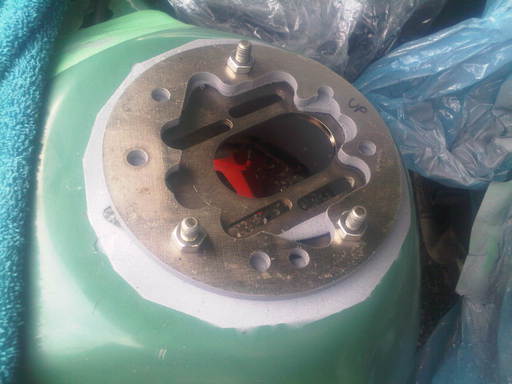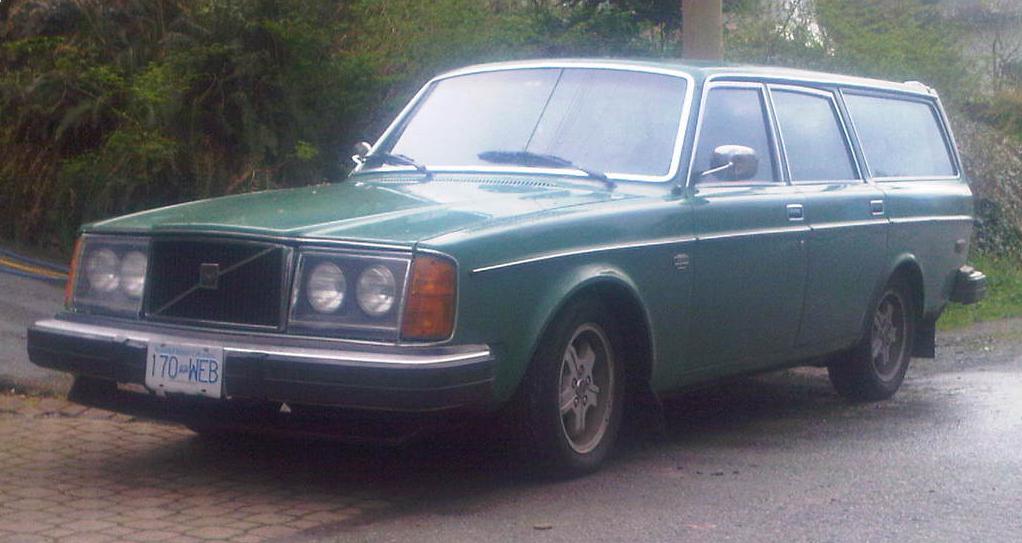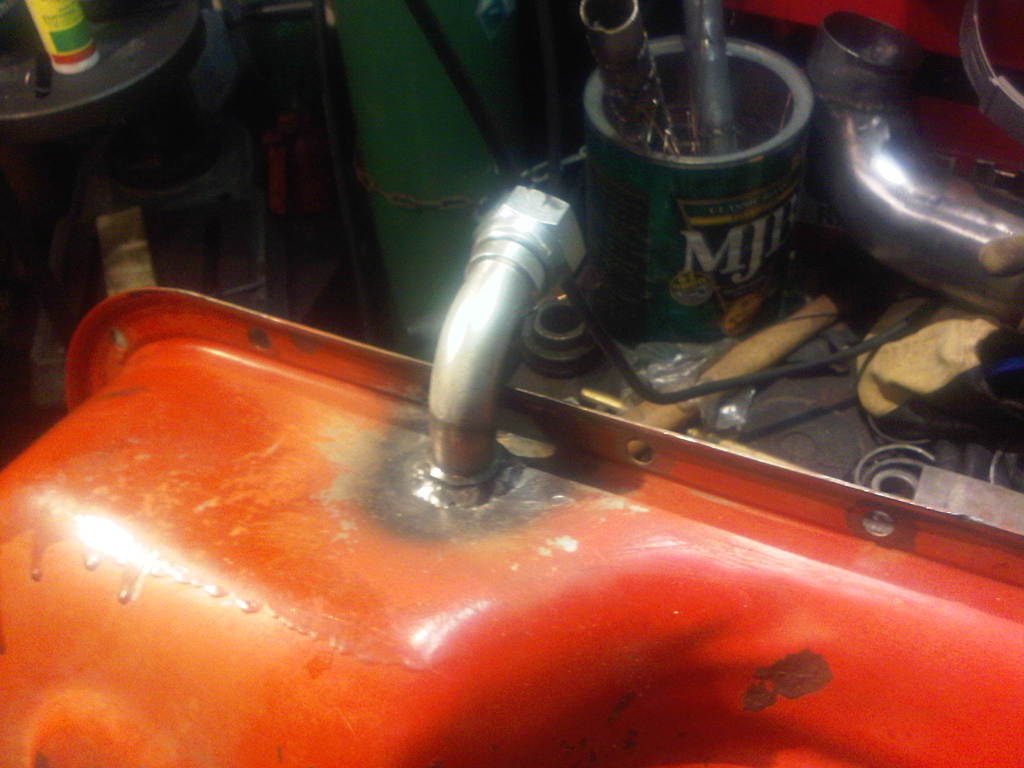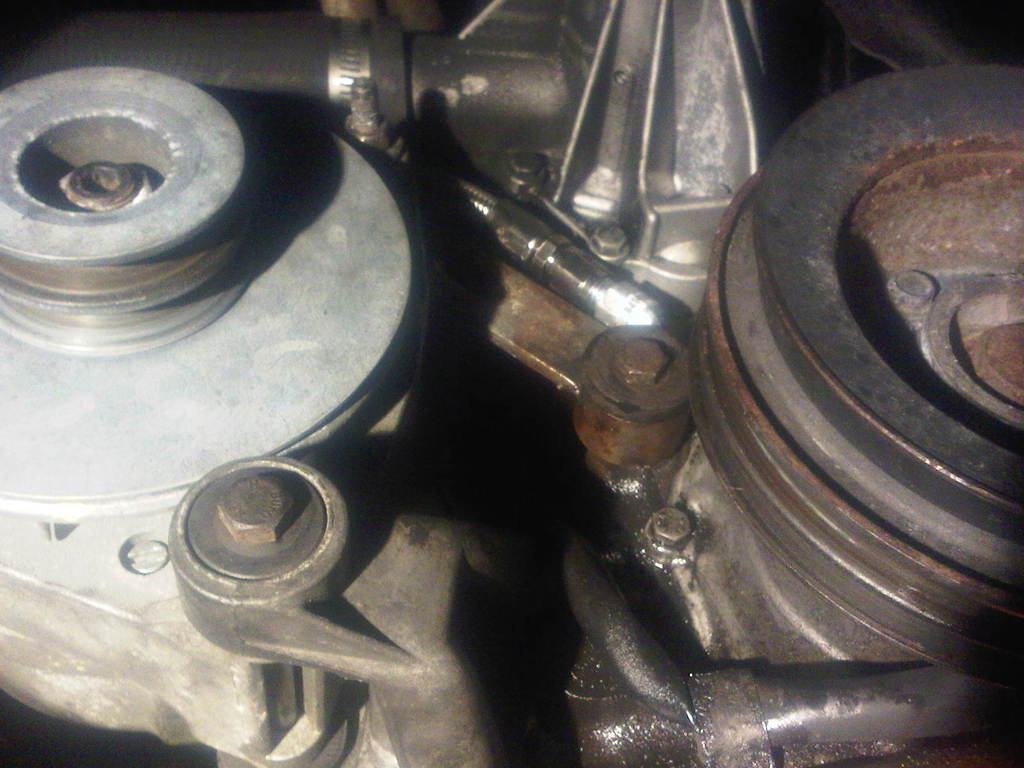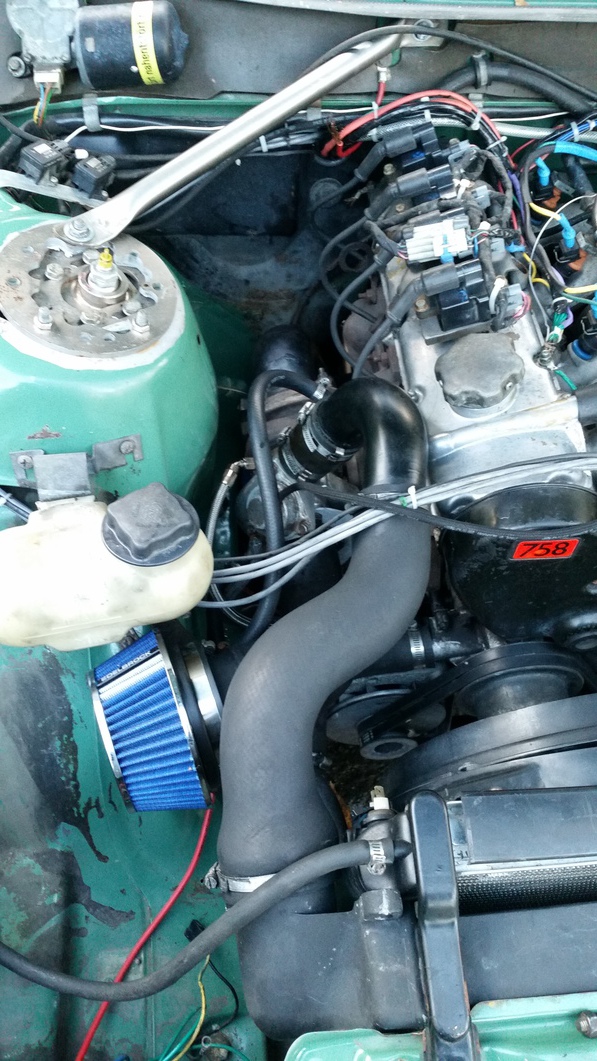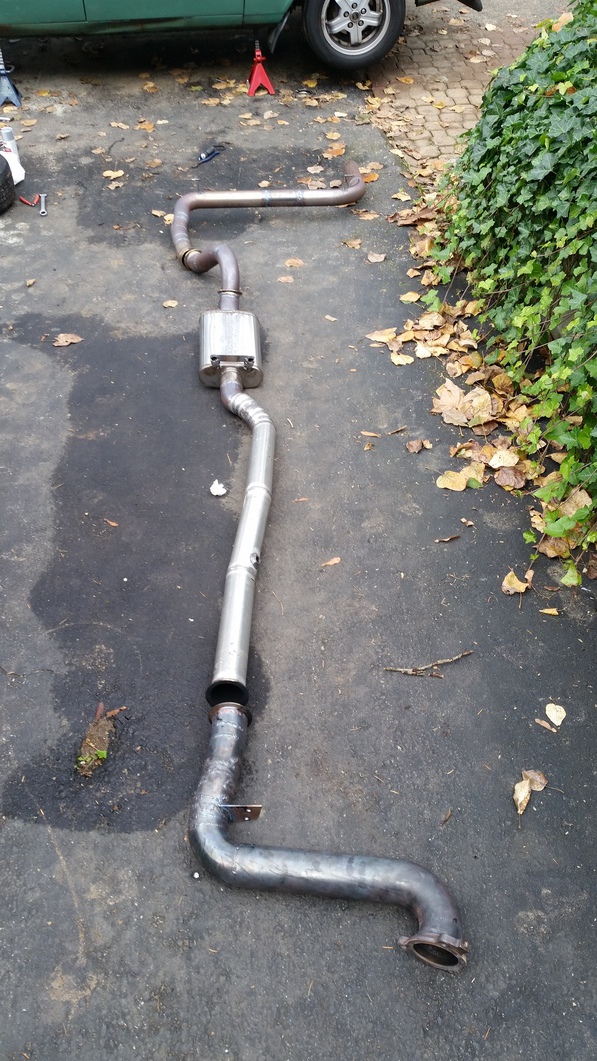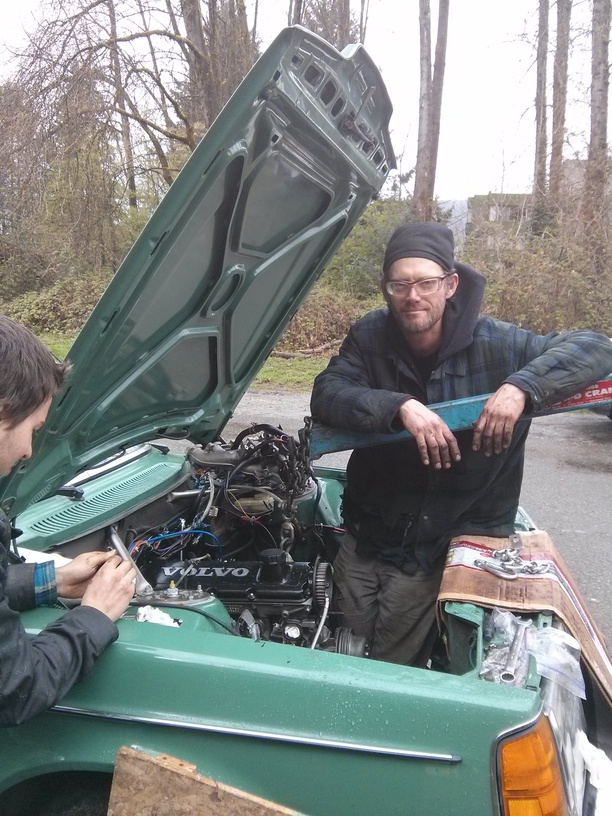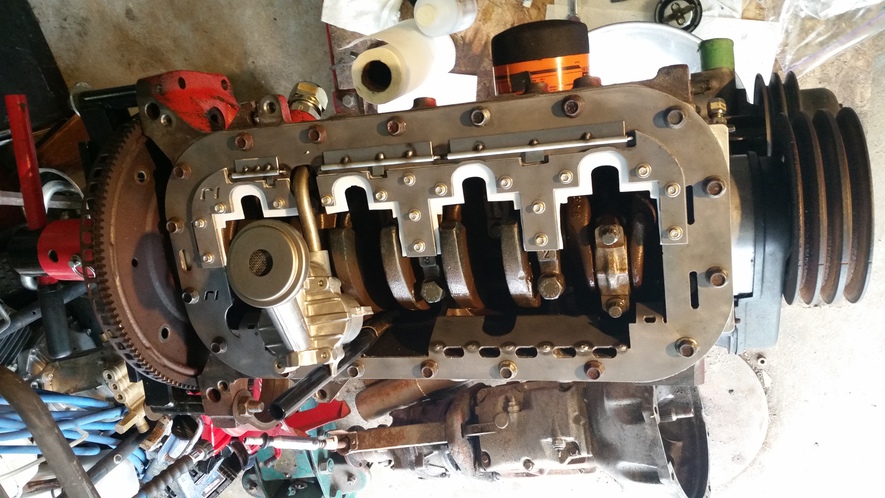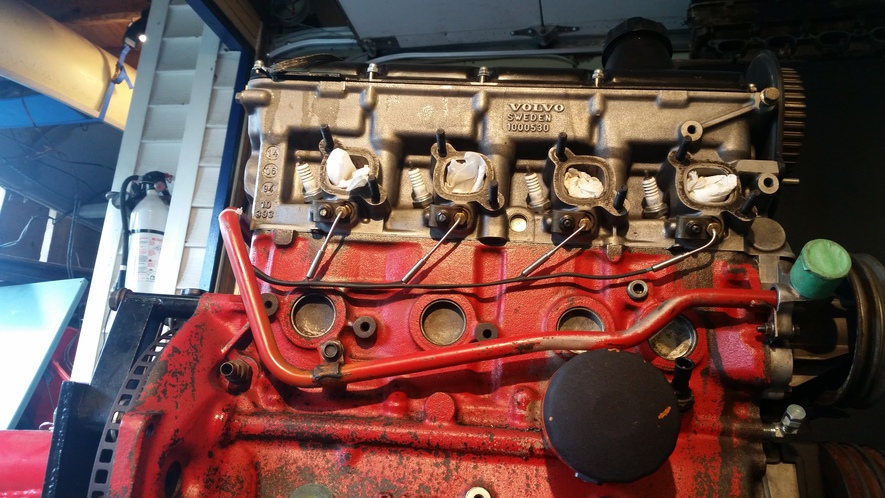Well, it's getting close to the end of 2014, and I've managed to
accomplish a few things since I last posted.
One of the used Bilstein HDs in the front siezed up, so I
replaced them with a set of Koni DA inserts. I put 350in/lb
barrel springs from Ben on there at the same time. I'm quite
happy with the set-up.
I installed an E-fan from a 940. I cut the shroud down to the
right width, overlapped the pieces and glued and pop-riveted them
together. I don't have a picture apparently, but it works well,
and looks pretty stock until you examine the drivers side
carefully.
The fan is driven by the stock relay (low speed only) and
switched by the FreeEMS. The output for the fan and software
set-up was done already, so that part was easy.
I don't think that the E-fan is an improvement over the clutch
fan that I removed yet. It certainly uses less power, as the fan
really only runs when the car sits still with the engine running
for a time. The temperature oscillates fairly widely though. It
gets a little hotter than I'd like and then overcools a bit too.
This is expected due to the hystersis in the simple on/off
algorithim, but not really a good situation as the head is
constantly heat cycling ~5+ degrees in city traffic situations.
At speed, the rad has no trouble keeping the engine cool with the
fan off. It actually seems like it cools down more than it did.
I'll be replacing the thermostat soon to see if that resolves
itself.
Ideally, the fan would be controlled through a great big FET with
a PWM signal that ramps up the fan speed as necessary to keep the
temperature closer to constant. I believe that using a VSS signal
to start the fan turning slowly as the car comes to a stop
(iff the coolant is up to temperature) would make a good
difference here as well.
So, the fan needs a transistor switch controlled by a PWM capable
ECU output to replace the stock relay. I need to install a
Vehicle Speed Sensor somewhere (along with a new Trutrac/Wavetrac
in the rear?) And the firmware needs to be improved with a more
sophisticated fan control algorithim. In the meantime, I may
install a dash switch for the high speed side for situations like
cooling the engine bay between autocross runs.
In the spring I also upgraded my shoebox ECU (the second
iteration) with injector drivers and fuel and fan relay drivers
so that I can swap between the Jaguar and the shoebox.
I also found an unpainted black air dam on a black 1980 GT in
good condition at the scrapyard:
I have some aluminium panels I'm going to use to make up a full
belly pan eventually.
Summer was really busy at work, I barely had time to drive the
car, let alone work on it. I did get out to a Porsche club
autocross event which firmly established that the car is really
slow. It does handle quite well -- for a Volvo 245.
Work has slowed right down in the past few weeks and I've been
able to take some days off. I have a minty 1995 L block on a
stand in the garage nearly ready to go. My plan was to swap the
motor and turbocharge it at the same time. Thinking it over, that
seemed a touch ambitious. I decided to add the plus-T stuff to
the tired old B21A that is in the car instead. Really, most of
the work needs to be done anyway. The extra work is pulling the
oil galley plug from the front of the block and pulling the oil
pan to weld a fitting to it. The tune will change a bit with the
new motor, as it has an extra 200ccs of displacement, but that
should be fairly straight forward. There is also the advantage of
using the old worn out motor as a scratch monkey; if I blow it
up, it's no great loss, just the cost of a tow home really.
With that decided, I pulled the pan:
Because Turbobricks, I didn't actually test it before putting it
back on the car, and of course, it leaked. So, my plus-T is done
proper turbobricks style with JB weld. There was no way I was
pulling that pan again.
The oil feed is taken from the usual place at the front of the
block. It almost looks like Volvo designed the engine for this:
I have a stock turbo airbox from a 740 that I need to modify to
fit. The NPR intercooler is a bit wider than the Volvo piece so
that complicates it a bit too. For now, I used a $15 cone filter.
It makes ridiculous sucking and whooshing noises through it.
Entertaining for now, but sure to become annoying.
Turbo parts installed:
I'm using a TD04HL-15G with an angled flange housing from a 13T.
The turbine housing is noticably bigger than the flat flange and
the conical flange housing is just a joke. With just a tiny bit
of grinding, a three inch pipe slips right into the downpipe
flange. It does require a funny compound bend to get the downpipe
headed in the correct direction. Worse, the turbine housing needs
some grinding and one stud on the manifold needs to be shortened
to get the last nut on. Even then, it is not easy to get on. I
attached the housing to the manifold on the bench, and had to get
that nut started on the stud with a couple of picks.
With a 3" downpipe, I was loathe to adapt down to my existing
2.5" exhaust. My exhaust was also not tucked up very well, with a
glasspack hanging down below and scraping on speedbumps. I
decided to redo the entire exhaust in 3", and tuck it better.
This took considerably more time than the +T. Fortunately, the
weather got cold and clear so I wasn't lying on my back on wet
ground at least.
I used a 14" Magnaflow ahead of the axle, and a 24"x7" round
Magnaflow in the rear position (backordered at the time of the
picture).
It no longer scrapes on speedbumps which I am very happy about.
Also, V-bands are way better than the three bolt flanges I used
on the last exhaust. Well worth the extortionate price.
With both mufflers in place, the exhaust is quite quiet, despite
being able to see right through the mufflers. Once I sort out the
airbox, the car shouldn't make more noise than a stock 240.
I did take it out for a short rip with just the downpipe. That
was pretty hillarious. Unfortunately, I forgot about the wideband
O2 sensor that I had left hanging under the car, and the heater
plus rain killed the sensor. That was stupid.
I've got the VE table dialed in fairly well at this point. The
volumetric efficiency took a shocking dive as compared to the
stock 4-2-1 into 2.5" pipe that I had been running. I feel it is
worth it though.
I need to do some work on my ignition timing table, I know there
is more power lurking in there.
I'm running a 0.5 bar spring in a Kinugawa wastegate actuator. I
haven't seen more than about 5psi of boost in the logs. Once I
replace the NA Honda MAP sensor with a GM 3bar, and work on the
tune a bit more, I'll install a MBC. Eventually, I'll put in a
boost control solenoid and set up the EMS to control it.
I think it is fair to say that the Snot Rocket is no longer slow.
It isn't fast either, but 5 psi is pretty fun. At this point, I
should only need to turn up the boost to make 200hp. Or a hole in
the block, one or the other.
The old B21A is holding up okay so far. She is pretty worn out,
and blows hard into the catch can when rev'ed right up. The smell
of burning Mobil 1 is strong on a long hill descent with the
throttle closed. The 80,000km squirter motor should make a pretty
good difference. I'll probably get that installed in the spring,
provided I don't ventilate the B21A in the meantime.
That was my 2014, pretty much. It wasn't looking like I'd get
much done, but it came together in the end. A proper LSD is now
pretty high on the list for next year.
